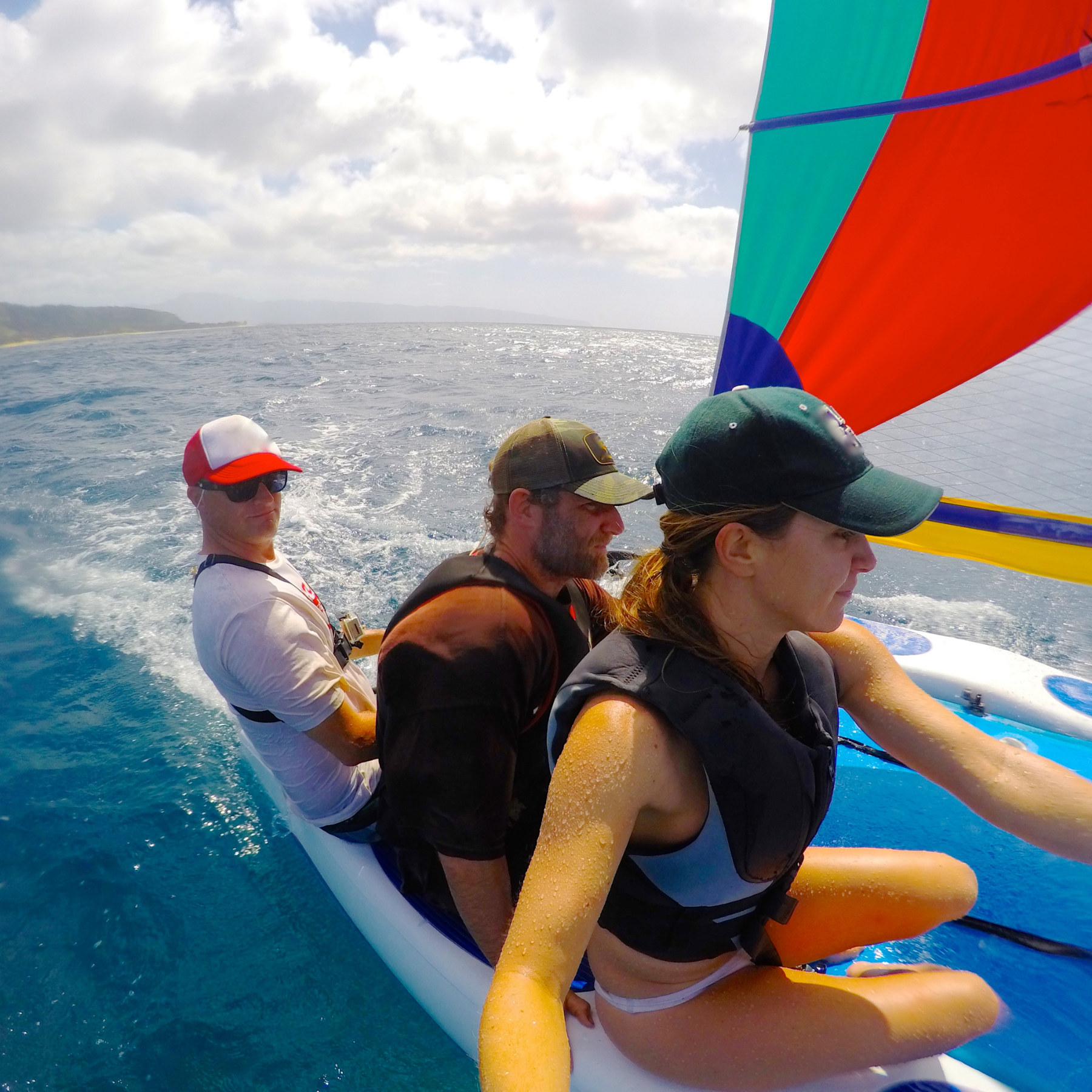What’s the smallest catamaran?
Many boaters dream of owning a catamaran because they’re fast and super comfortable downwind. If you love the idea of owning a cat, but you don’t want to break the bank or can’t go off cruising, why not consider a dinghy catamaran? The Hobie Cat is generally recognised as the smallest catamaran you can find and a second-hand one can be bought for fairly cheap.
Dinghy cats are a fantastic option for novice racers - especially those who suffer from seasickness. They’re easy to sail and beach, and you can trailer them home at the end of the day.
On a dinghy catamaran, you can experience exhilarating speeds on a stable platform. Let’s answer some of the most common questions around dinghy catamarans.
What is a dinghy catamaran?
A dinghy catamaran is a tiny, lightweight, engineless sailing catamaran. It features a small rig and a very basic deck, which is made out of a trampoline. Their length generally varies between 12 and 18 feet.
How fast do dinghy cats go?
Most dinghy cats can sail faster than the wind. The Hobie Cat 14 goes up to 21 knots - the equivalent of 24 miles per hour, or 37km per hour. The 16 can reach a maximum speed of about 24 knots, which is 28 miles per hour, or 45.5km per hour.
If you’re keen to reach higher speeds, you’ll need to learn how to fly a hull, which involves raising the windward hull out of the water. To keep it there, you need to balance the boat properly.
Get the free DECKEE boating app
DECKEE helps you plan, prepare and explore the waterways with confidence.
Is sailing a dinghy catamaran easy?
Dinghy cats are relatively easy to sail, especially if you don’t push the boat too much to start with. A small, lightweight cat will react to every movement and sail trim, making it a lot easier to learn how to sail it.
Remember that sailing isn’t an “intuitive” skill, though - you can’t just jump on a sailboat and “go.” You’ll need some tuition at the beginning. Two to three sailing lessons are usually enough to teach you the basics. You can then practice alone.
Are dinghy catamarans easy to manoeuvre?
If you know how to sail, a dinghy catamaran will feel very easy to maneuvre, as they're very responsive. You can even turn on the spot. However, you need to know how to sail in order to manoeuvre a small catamaran precisely, just like any other boat. The ease of responsiveness of a dinghy catamaran will give you an advantage.
Can a dinghy catamaran flip over?
Yes, if you are over-canvassed in a strong breeze or a big wave hits the side of one of the hulls, the cat can capsize. However, on such a small boat, that’s to be expected, especially when you’re a beginner. It’s all part of the fun.
Dinghy catamarans, such as Hobie Cats, have excellent buoyancy, so they easily stay afloat, offering you a safe platform to hold on to while you wait for help.
You can recover the cat solo by helping it right itself using your weight. Here’s how to do it:
Climb onto the submerged hull
Take the capsizing righting line
Throw it over the hull that’s in the air
Turn the boat head to wind, release the mainsheet
Put the capsizing righting line on your hook or under your buttocks
Hold both ends of the rope
Lower yourself down - your weight will pull the raised hull back down into the water
As the boat starts righting, get out of the way of the hull while holding onto the boat.
Jump into the middle of the bows - from here, you can climb back on board.
To turn the boat head to wind, stand on top of the bow in the water to submerge it further. It will act as a sea anchor and allow the boat to turn into the wind.
If you’re out on your own without assistance and you don’t want to recover the boat solo, pay special attention to wind gusts and big waves and trim your sails conservatively.
Sailing a dinghy catamaran is a fantastic outing idea for friends, couples, and families. Experience thrilling speeds and try out a highly responsive boat to refine your sailing skills.
Get the free DECKEE boating app
DECKEE helps you plan, prepare and explore the waterways with confidence.



